Abstract
Forty three infants were assigned randomly to a ready-to-feed infant formula or a standard formula that required reconstitution from powder. Despite similar nutrient composition of the two formulas those fed the powdered formula had significantly increased body weight and skinfold thickness gains, and became significantly heavier than a further group of 20 breast fed infants by 3 and 6 months. Of those fed the powdered formula 6/19 had become overweight (above the 90th or 97th centile) by 6 months, whereas 1/19 fed the ready-to-feed product was overweight at this age. While differences in fat absorption might have been contributory, our data suggest that errors in reconstitution of formula from powder might be the main cause for the growth differences observed. If it is appropriate to take the breast fed infant as a model, infants fed ready-to-feed formula in this study showed a more physiological pattern of growth than those fed a standard formula reconstituted from powder. These results require replication using other formulas as the findings have potentially important implications for infant feeding.
Full text
PDF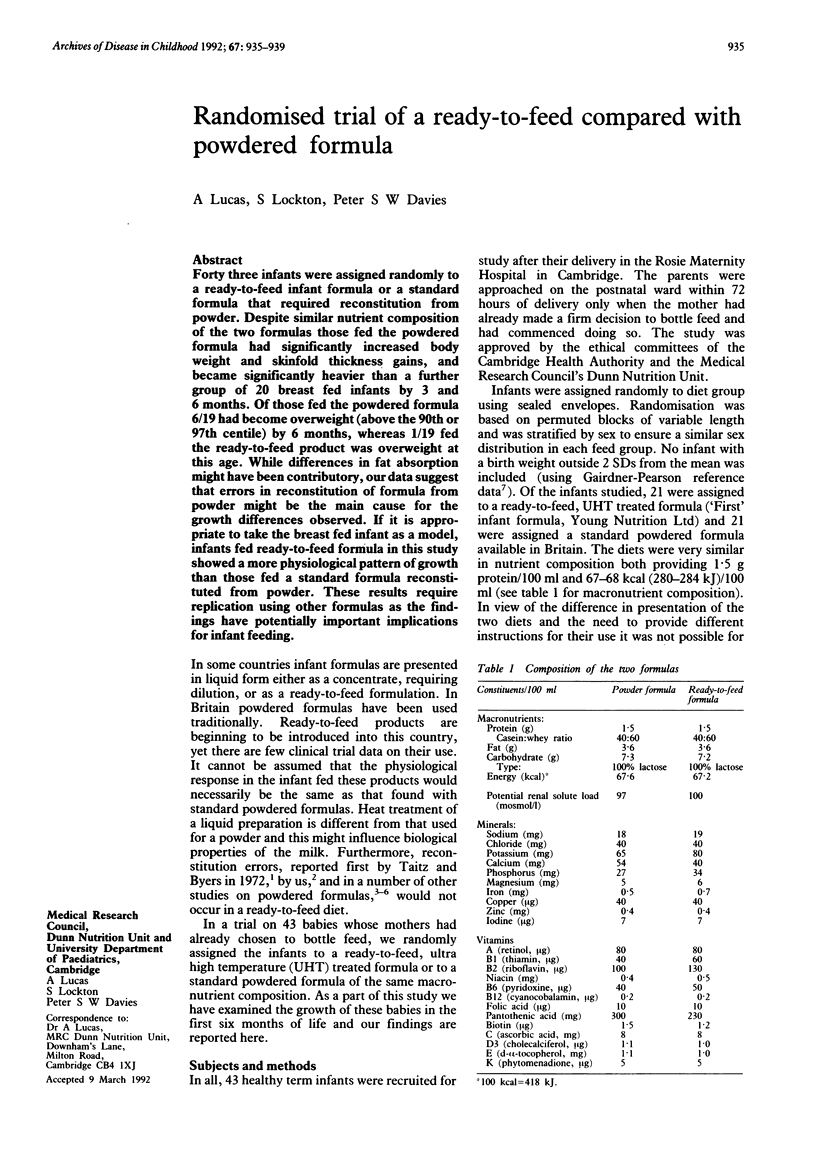
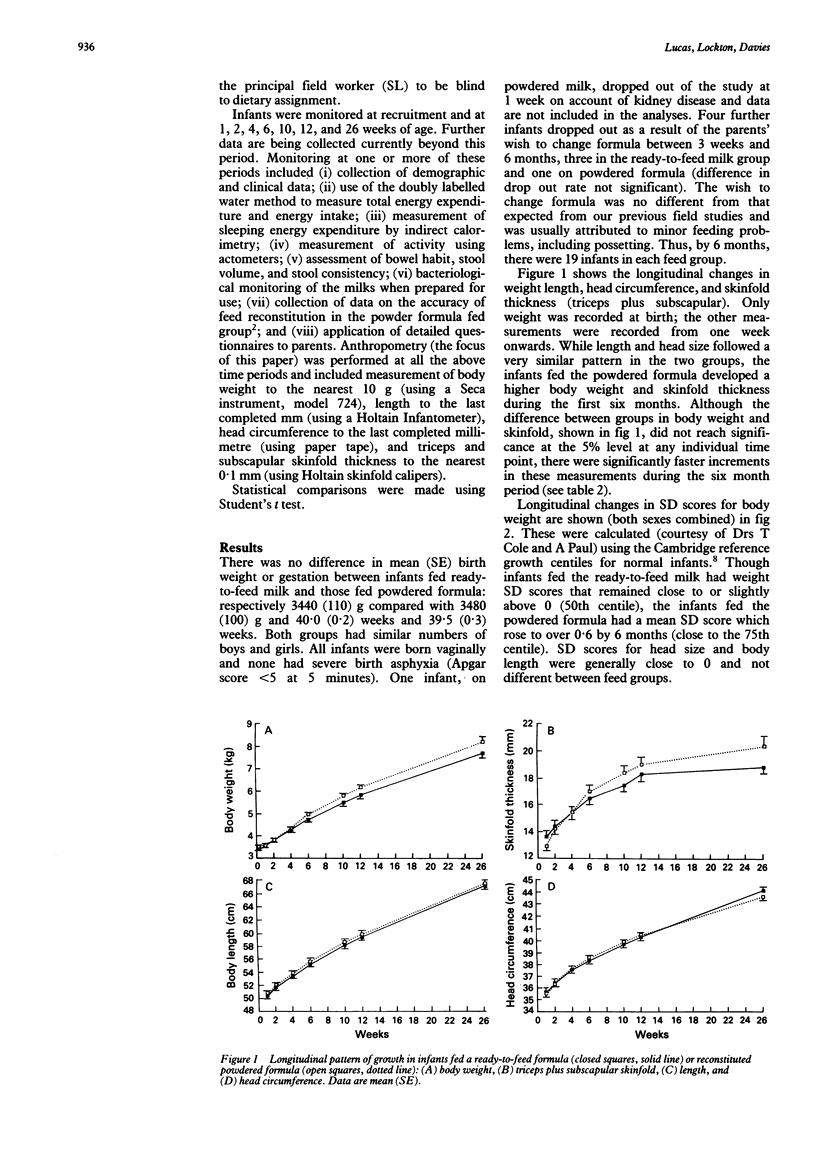
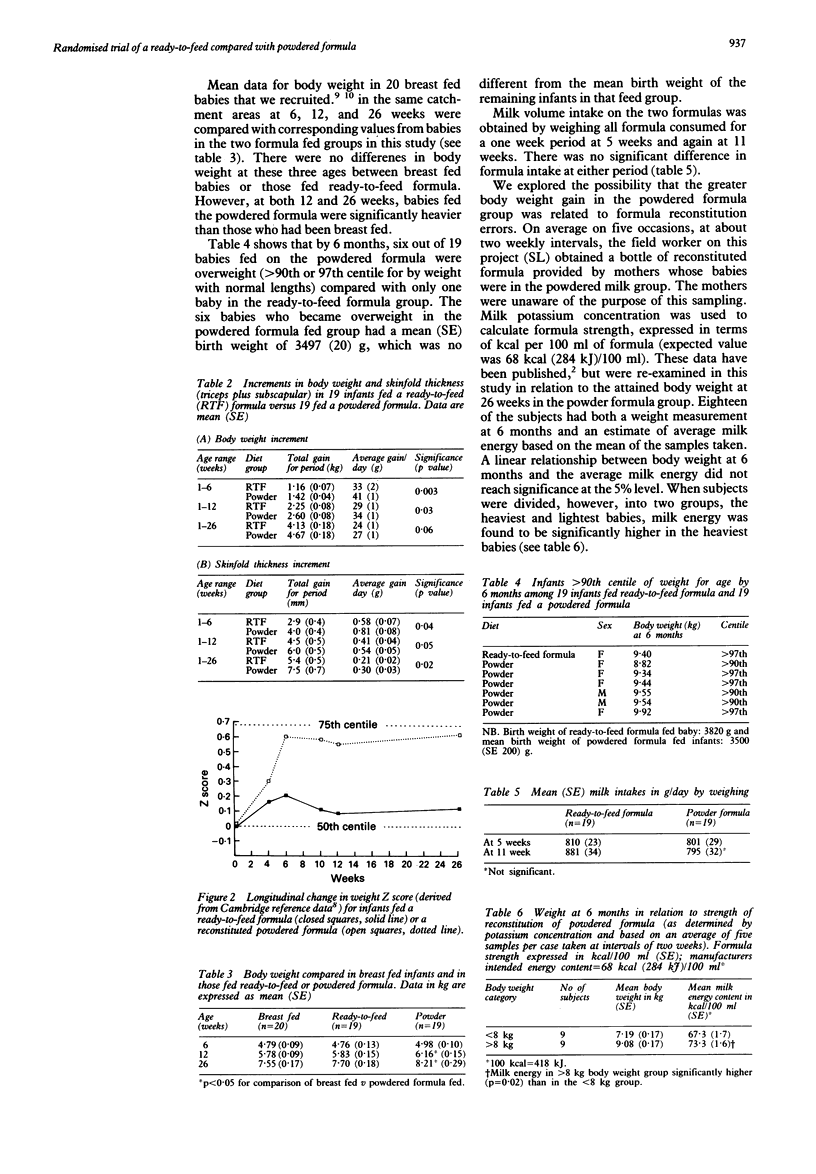
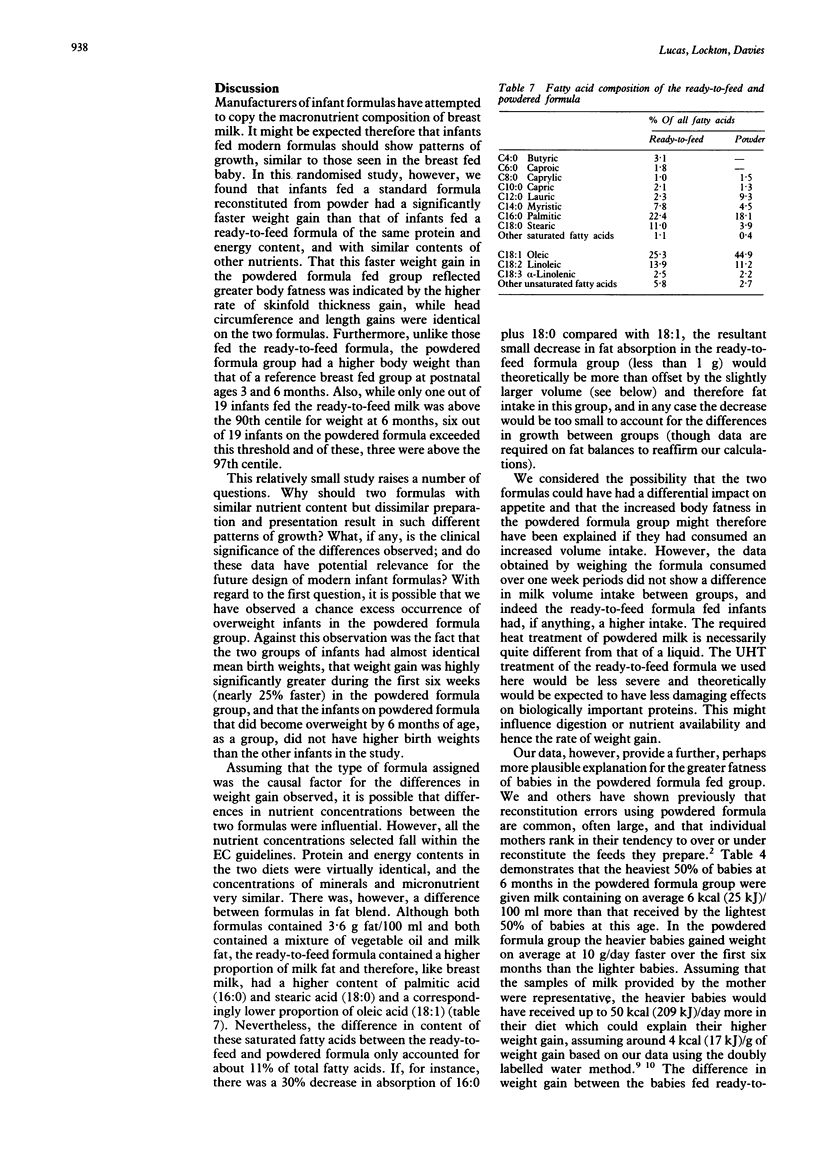
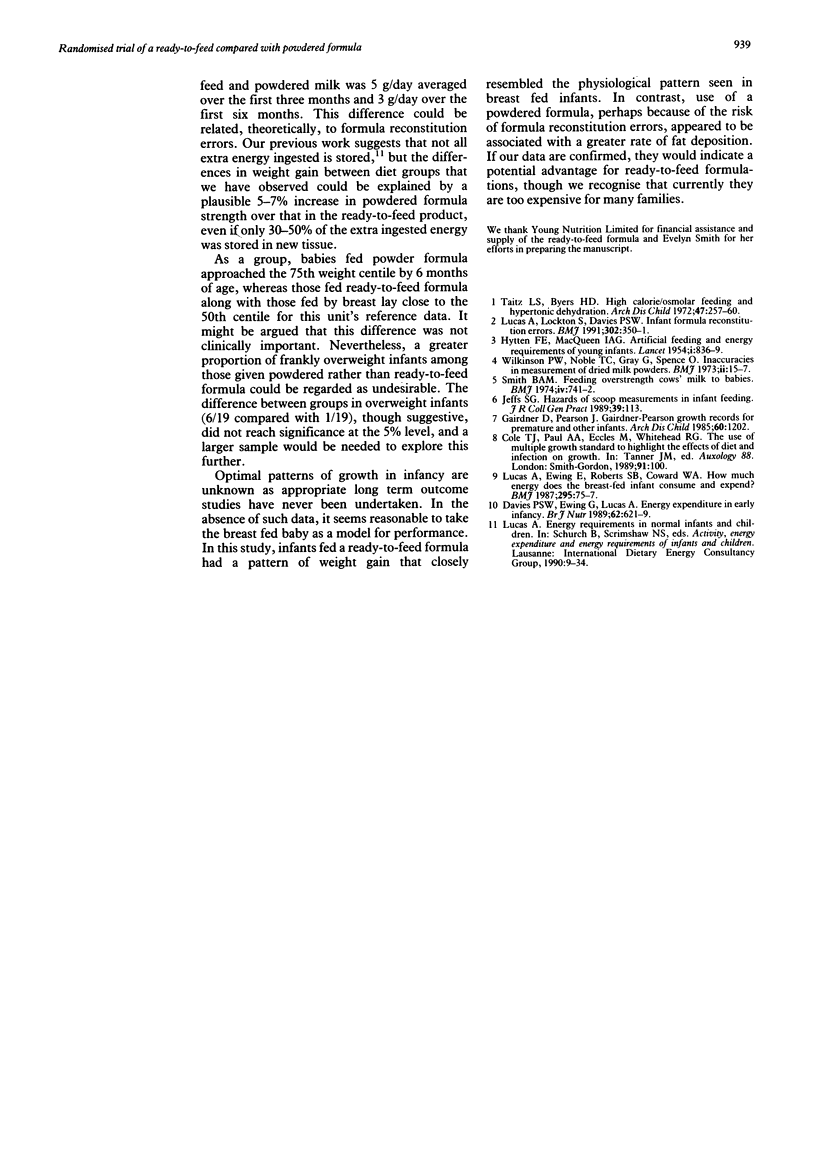
Selected References
These references are in PubMed. This may not be the complete list of references from this article.
- Davies P. S., Ewing G., Lucas A. Energy expenditure in early infancy. Br J Nutr. 1989 Nov;62(3):621–629. doi: 10.1079/bjn19890062. [DOI] [PubMed] [Google Scholar]
- HYTTEN F. E., MACQUEEN I. A. Artificial feeding and energy requirements of young infants. Lancet. 1954 Oct 23;267(6843):836–839. doi: 10.1016/s0140-6736(54)91930-3. [DOI] [PubMed] [Google Scholar]
- Jeffs S. G. Hazards of scoop measurements in infant feeding. J R Coll Gen Pract. 1989 Mar;39(320):113–113. [PMC free article] [PubMed] [Google Scholar]
- Lucas A., Ewing G., Roberts S. B., Coward W. A. How much energy does the breast fed infant consume and expend? Br Med J (Clin Res Ed) 1987 Jul 11;295(6590):75–77. doi: 10.1136/bmj.295.6590.75. [DOI] [PMC free article] [PubMed] [Google Scholar]
- Smith B. A. Feeding overstrength cows' milk to babies. Br Med J. 1974 Dec 28;4(5947):741–742. doi: 10.1136/bmj.4.5947.741. [DOI] [PMC free article] [PubMed] [Google Scholar]
- Taitz L. S., Byers H. D. High calorie-osmolar feeding and hypertonic dehydration. Arch Dis Child. 1972 Apr;47(252):257–260. doi: 10.1136/adc.47.252.257. [DOI] [PMC free article] [PubMed] [Google Scholar]
- Wilkinson P. W., Noble T. C., Gray G., Spence O. Inaccuracies in measurement of dried milk powders. Br Med J. 1973 Apr 7;2(5857):15–17. doi: 10.1136/bmj.2.5857.15. [DOI] [PMC free article] [PubMed] [Google Scholar]


